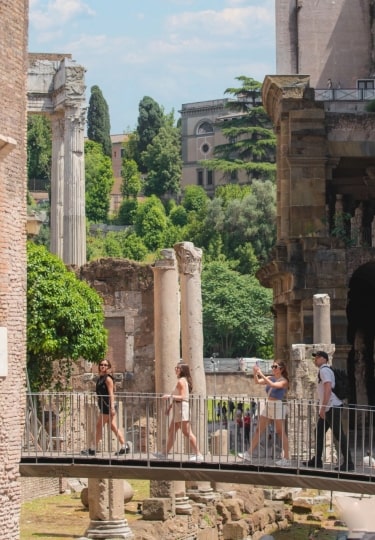Monti, Rome, is a bohemian neighborhood that’s easily one of the Eternal City’s best quarters to explore. Part of the city’s historic core, Monti’s borders skirt several major sites including the Colosseum, The Forum, and, just a little further to the south, the Circus Maximus. Walk from Termini Station to the Colosseum, and you’ve crossed Monti.
Its history stretches back to the very early days of Rome. Officially the first “rione” of the city, or neighborhood, Monti’s charming, cobbled streets ramble over no fewer than three of Rome’s seven hills: Esquiline Hill, Viminal Hill, and Quirinal Hill. However, despite its proximity to the imperial Forum, Monti used to be a slum and a seedy part of town.
Today, things are much different. Monti, Rome, is now a sought-after address and a home to intellectuals and artists. Wandering its maze of streets find atmospheric wine bars, art-gallery cocktail joints, and treasure-stuffed workshops dotted around dainty piazzi. And all of it in the shadow of the Colosseum. A trip around Monti is a dose of pure Roma.
Attractions in Monti, Rome
The Colosseum
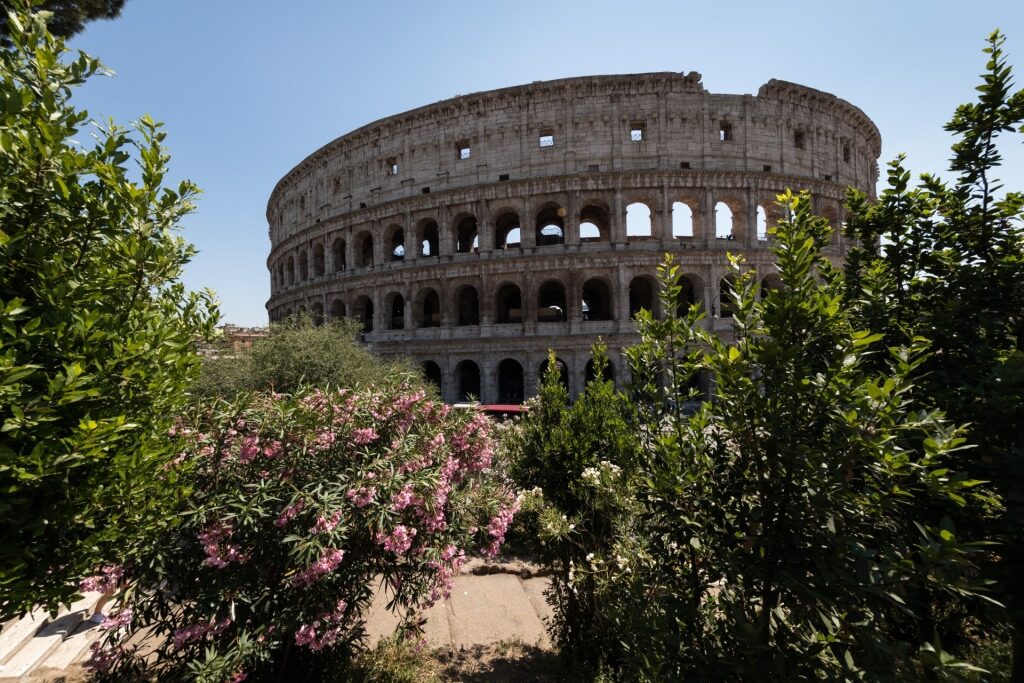
Colosseum
One of the best places to visit in Italy with kids, the Colosseum is a triple-tiered donut of classical pomp and probably the most recognizable symbol of the ancient Roman way of life. Its eponymous metro stop is within Monti’s borders, and as you step out you’re presented with the eternal curves of the Flavian Amphitheatre, as it’s also known.
Built in 80 AD, the Roman landmark was the prototypical sports arena, capable of seating 80,000 toga-clad citizens. But its use went beyond the goading of wild animals and gladiatorial combat. Its large oval floor, equipped with trap doors and numerous entrances, was also employed for elaborate theatrical shows.
A guided tour of the Colosseum is a must when visiting Monti, Rome. These tours will take you below the arena floor to explore the network of tunnels in which gladiators prepared to face the baying crowd.
The Roman Forum
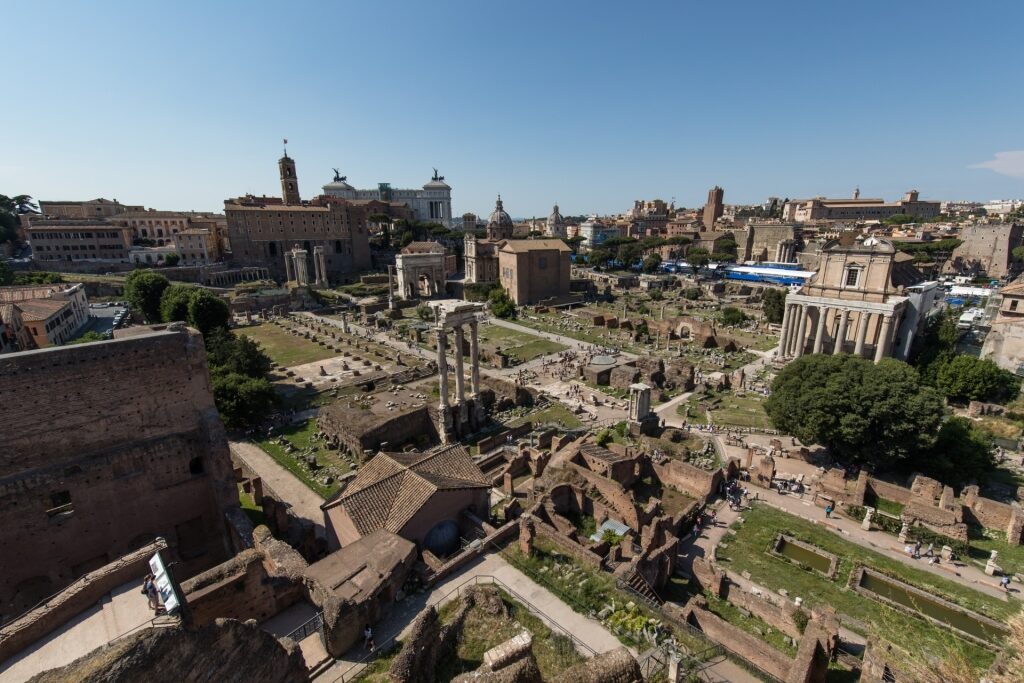
Roman Forum
Once the center of political life in the Roman empire, the Forum’s Corinthian columns still tower overhead 2,000 years later, exerting an undeniable authority. Landscape painters such as Canaletto and Turner expressed this quality in large-scale romantic works. In these, modern visitors were the size of ants in comparison to the gigantic remains of Rome.
And, yes, you too can peer up at the magnificence of the Forum, the skeleton of its political spine resting in a depression between the Capitoline and Palatine hills, adjacent to the Colosseum. Among the many central cogs of the empire still mostly standing are the Senate House, the Arch of Septimius Severus, and The Temple of Saturn.
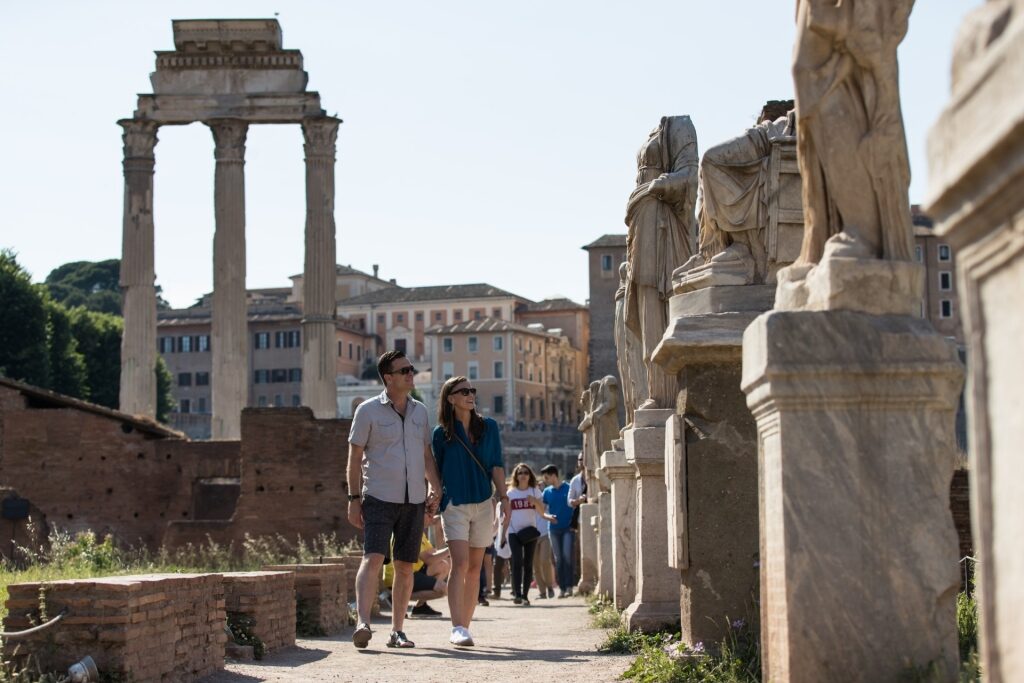
Roman Forum
With so much to see and understand, unless you’re an expert on the time period, it’s highly recommended to take a guided tour or download an audio app.
A good rule of thumb for any of the major sites in Rome is to arrive early in the morning or towards the end of the day. Besides the absence of searing midday heat and crowds, the lighting at these hours heightens the silent drama of this remarkable archaeological park.
Read: Three Days in Rome
Church of San Pietro in Vincoli
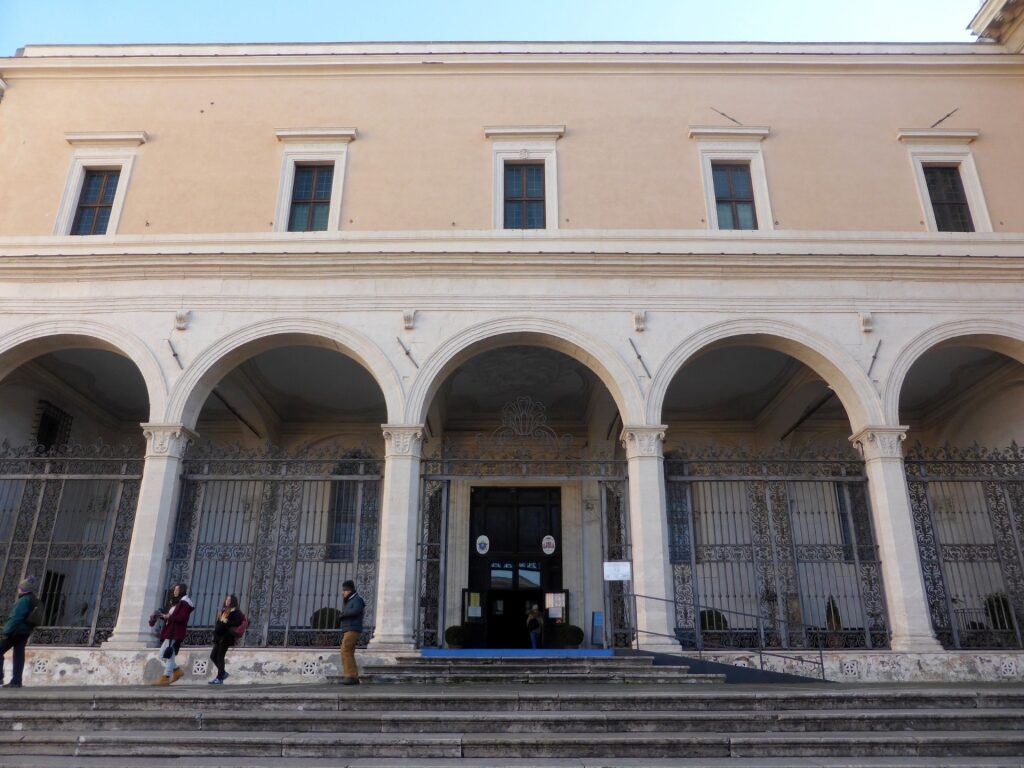
Church of San Pietro in Vincoli
Follow the steps leading up from Via Cavour, pass beneath the elegant arches of the loggia, and you’ll arrive within the soaring interior of the Church of San Pietro in Vincoli.
This fifth-century Roman church distinguishes itself for two treasures housed within: Michelangelo’s “Moses” sculpture and the relic believed to be the shackles of St. Peter. The housing of the relic, apparently from the saint’s imprisonment while in Jerusalem, was the catalyst for the basilica’s construction.
According to legend, the shackles, displayed in a reliquary beneath the main altar, miraculously joined together upon arrival at the Church of San Pietro in Vincoli. To the altar’s right, the exquisitely carved figure of a seated Moses was intended to be the centerpiece of Pope Julius II’s unfinished tomb.
Trajan’s Column
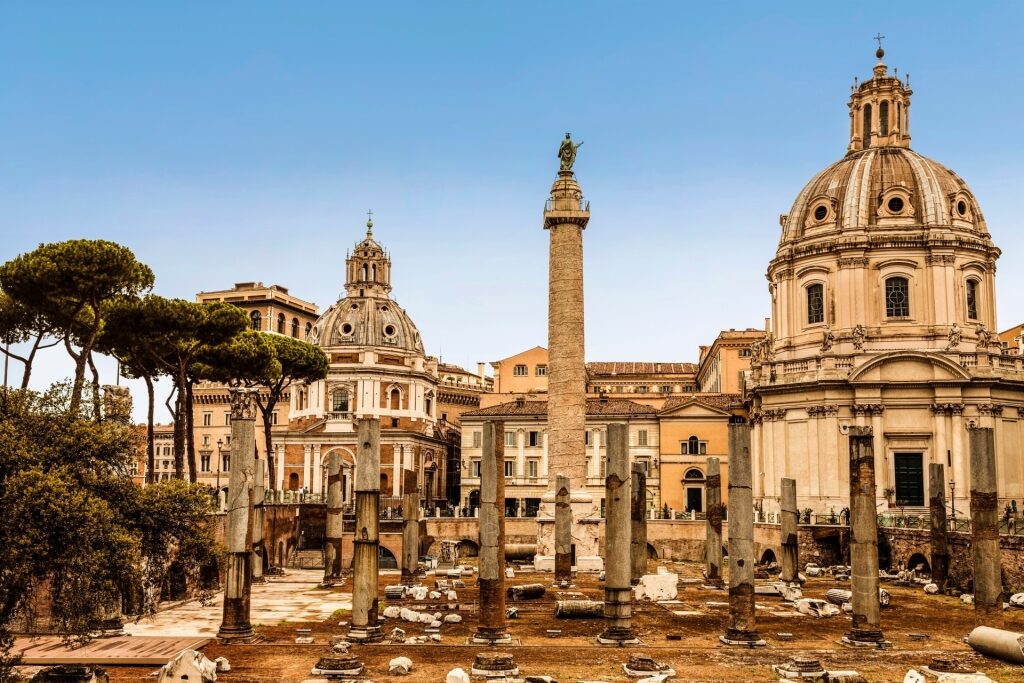
Trajan’s Column
Marking the westernmost extent of the rione of Monti, Rome, Trajan’s Column is the dazzling centerpiece of Trajan’s Forum.
This 98-ft high column is famous for its wraparound bas relief. The narrative that spirals up the Carrara marble column depicts Emperor Trajan’s victory over Dacia, which is present-day Romania. The victory, in 105 AD, was so satisfying that it led to Trajan announcing 123 days of celebration in the empire.
The detail in the column is astonishing, with the saga split into 155 scenes featuring 2,662 figures. See if you can find the emperor himself, represented on the column no fewer than 58 times. Upon Trajan’s death, a bronze statue of the emperor was placed at the top, but this was lost in the Middle Ages. Today, a statue of St. Peter stands in its place.
Things to Do in Monti, Rome
Discover Monti’s Hipster Side
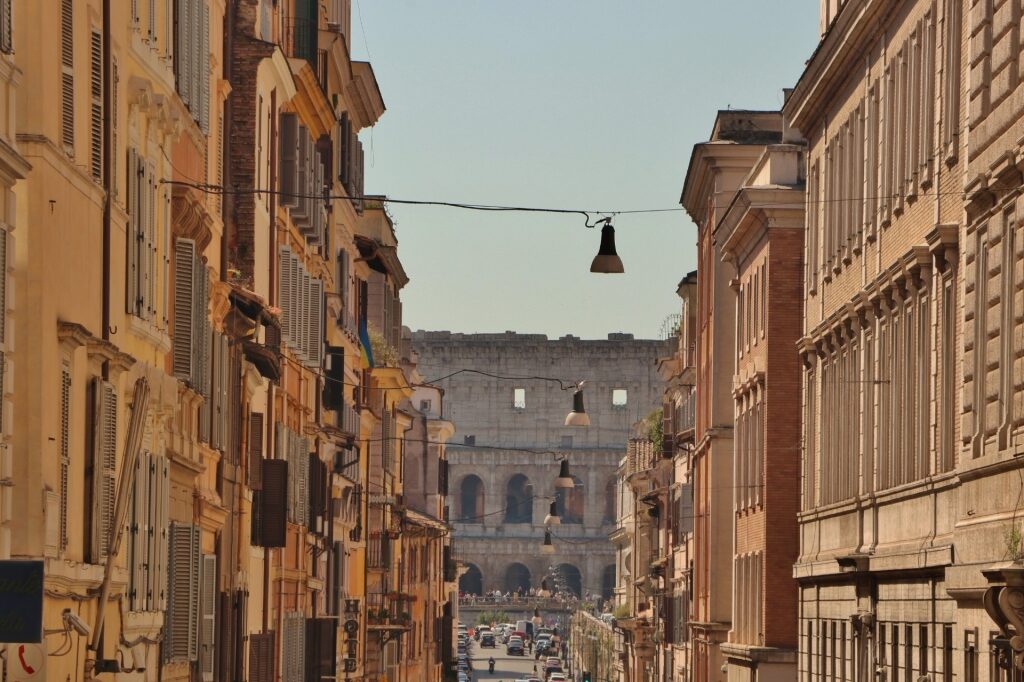
Monti
Monti, Rome, is known as one of the hipster pockets of the city. While the demographics of this central Roman neighborhood are varied, there is a distinct boho vibe to Monti due to the concentration of artists and musicians who have made a home here. This imbues the area with a tangible sense of community, easily tapped into in Piazza della Madonna dei Monti.
A short stroll north of the Forum, this charming, cobbled piazza and its local color is best enjoyed with hazelnut gelato from nearby Gelateria dell’Angeletto. The streets that peel off from this community hub with its cafés and fountain are rich in artisan nooks and vintage boutiques. Trawl Via dei Serpenti, Via Urbana, and Via del Boschetto if you’re after clothes.

Vintage clothes
At Via Leonina 46, you can find another cluster of Monti’s creative energies: Mercato Monti. Home decor, vintage clothes, and more are available for sale from the stalls within this popular indoor market.
Afterward, revel in your finds over aperitivo at the fabulous Blackmarket Hall. A bar and restaurant inhabiting a former monastery, this speakeasy-style venue is also known for its excellent live jazz.
Take Five in Colle Oppio Park
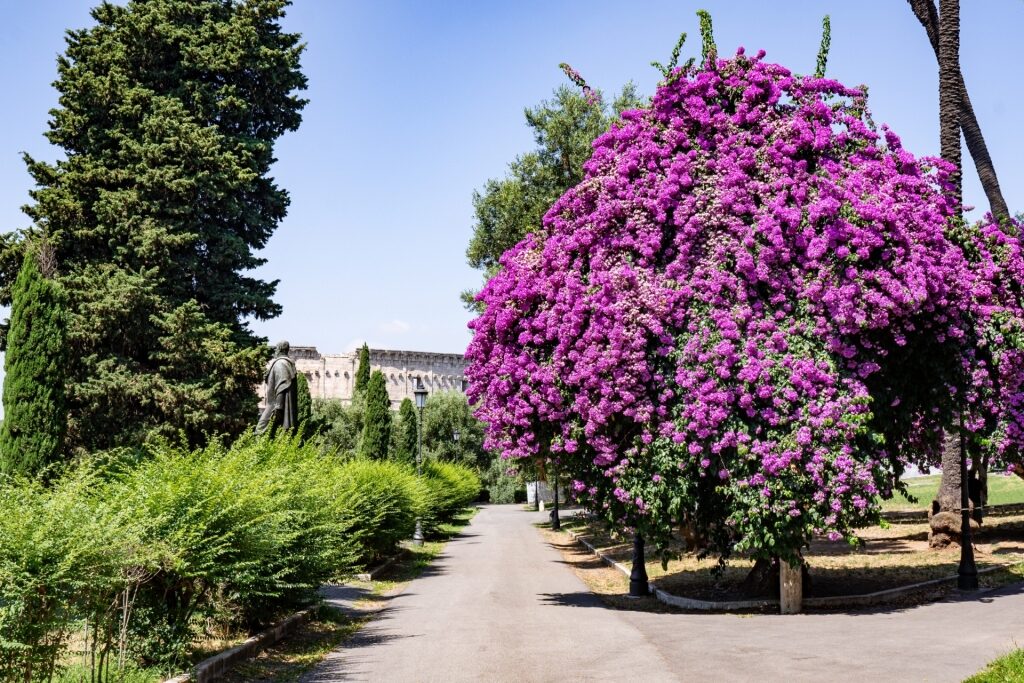
Colle Oppio Park
Shaded by leggy umbrella pines and offering wonderful views of the Colosseum, Colle Oppio Park is one part elegant green space and another part archaeological park.
Situated just north of the Colosseum on the Oppian Hill, the 27 acres that comprise the Colle Oppio include the ruins of the Baths of Trajan and the Domus Aurea. The latter in particular is well worth a look, designed by Emperor Nero and recognised as the most lavish of all of the imperial residences. You’ll find both sites in the southern part of the park.
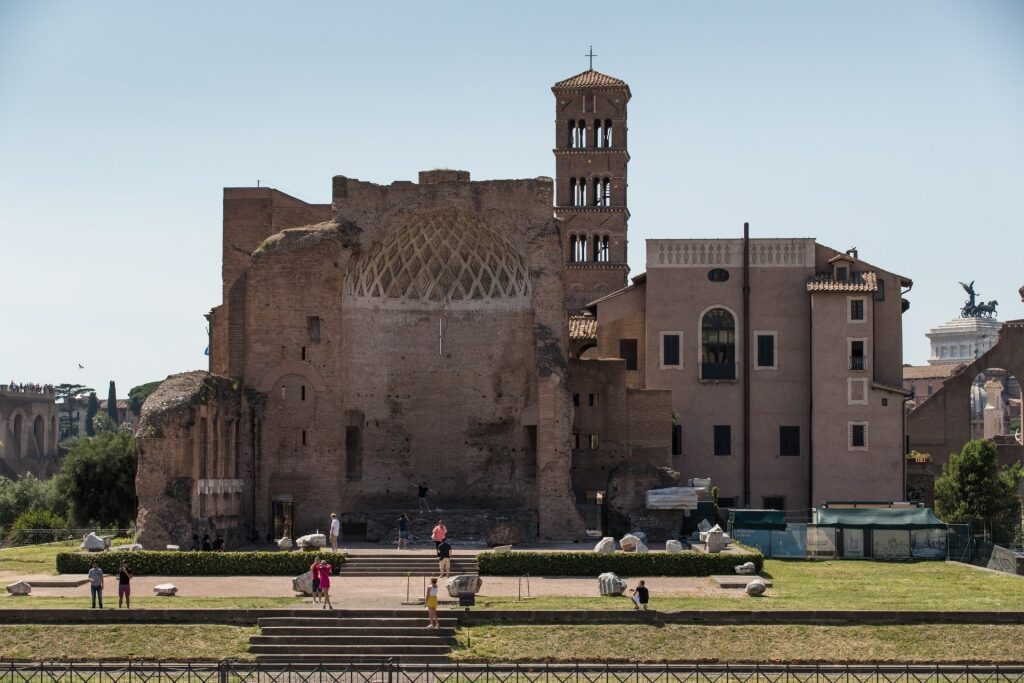
Domus Aurea
Stroll down the two main avenues, Viale Mizzi and Viale Delle Domus Aurea, or divert amid the cypress and holm oaks, occasionally guessing at the evocative ruins you encounter. As with any significant green space in Rome, you tend to find eclectic goings-on with anything from workout groups to local choirs practicing in the open air.
Get a refreshment at the beloved Chiosco di Nunzia Al Colle Oppia café. Here, locals and dog walkers regularly gather for beers, espressos, and breeze shooting.
See an Ancient Shopping Mall at Trajan’s Market
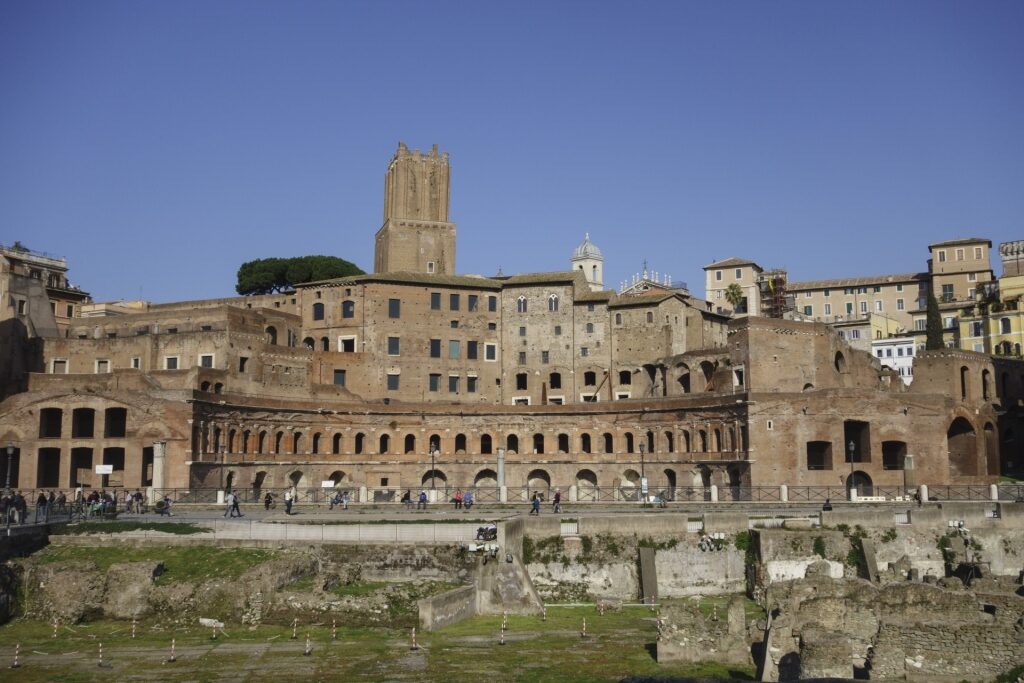
Trajan’s Market
Close to the Imperial Forum is Trajan’s Market—a stunning piece of Roman architecture constructed over several levels.
Built into the Quirinal Hill, the 2,000-year-old market is often dubbed “the prototype shopping mall.” It’s a ticketed site to enter, but once inside you can explore the commerce floor where over 150 shops and their wares would have been available to the citizenry.
But as you’ll learn from the superb Roman museum, this multi-level structure was much more to the ancient Romans than just a place to buy groceries. Best of all, Trajan’s Market is easily one of Rome’s most overlooked archaeological gems. Whenever you go, you’ll find it’s never too crowded.
Read: Best Places to Go Shopping in Rome
Drink in the Art Galleries
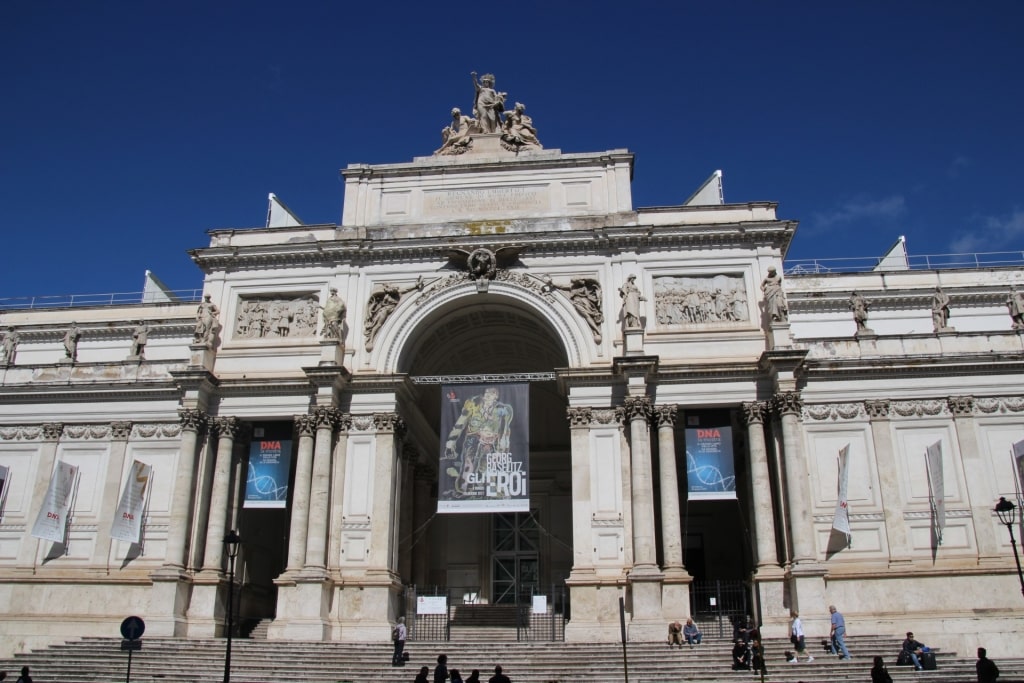
Palazzo delle Esposizioni
Monti, Rome, is blessed with an impressive array of art galleries. It’s reflective of the neighborhood’s ever-shifting identity, with one foot in the traditional and another in the countercultural.
The most significant is the Palazzo delle Esposizioni. Built in 1882 and once the HQ for the Italian Communist Party, this neoclassical pile is now a cultural hub for the city as a whole. Beneath its all-glass roof, you’ll find some of the Eternal City’s most impressive exhibitions featuring heavy-hitter international artists as well as local names.
Perhaps more reflective of Monti’s style is the Sacripante Art Gallery on via Panisperna. With the artwork hung at the back and superb cocktails being served, it’s a wonderful little slice of hipster Monti. Galleria Cabaret Voltaire has a similar eclectic vibe, where you can enjoy live jazz alongside cocktails while browsing artworks by Monti-based artists.
Restaurants
La Carbonara
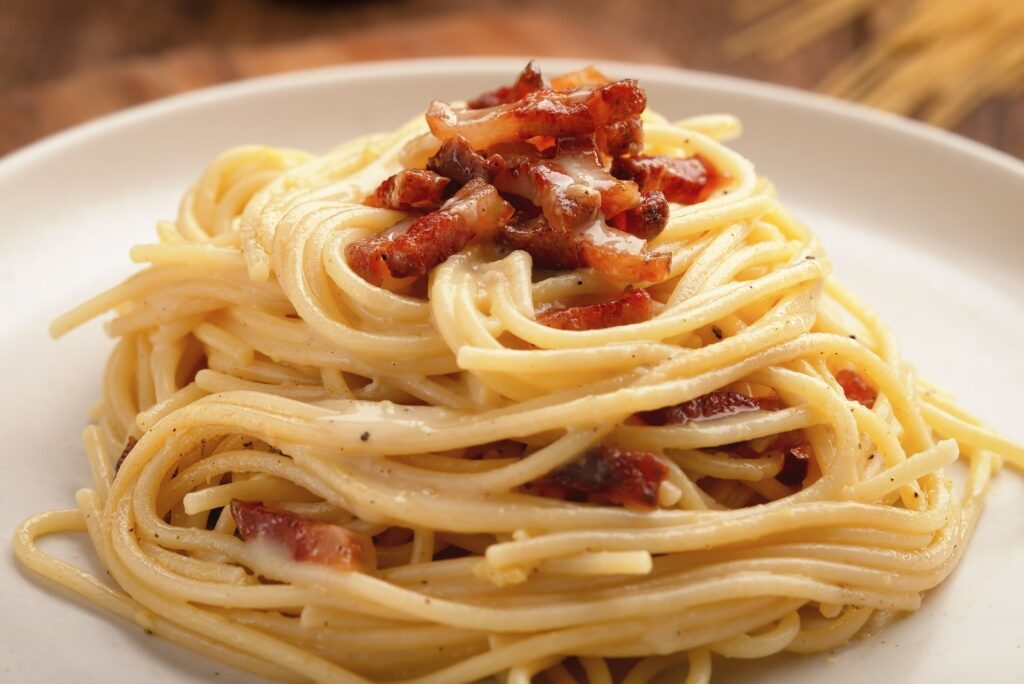
Carbonara
This storied Italian restaurant is found on a cobbled sidestreet in Monti. When closed, its graffitied and paint-peeling facade might make you pause and consider booking at the trattoria across the street.
That’d be a mistake. The line begins shortly before opening, and soon the tables in this two-floor restaurant are full of locals enjoying some of the best pasta in Monti. Obviously, the popular Roman dish, carbonara, is outstanding—Gordian knots of egg, guanciale, and Parmigiano Reggiano-slicked noodles.
But you’ll find everything you’d expect on this traditional menu, and all cooked to absolute perfection.
Alle Carrette
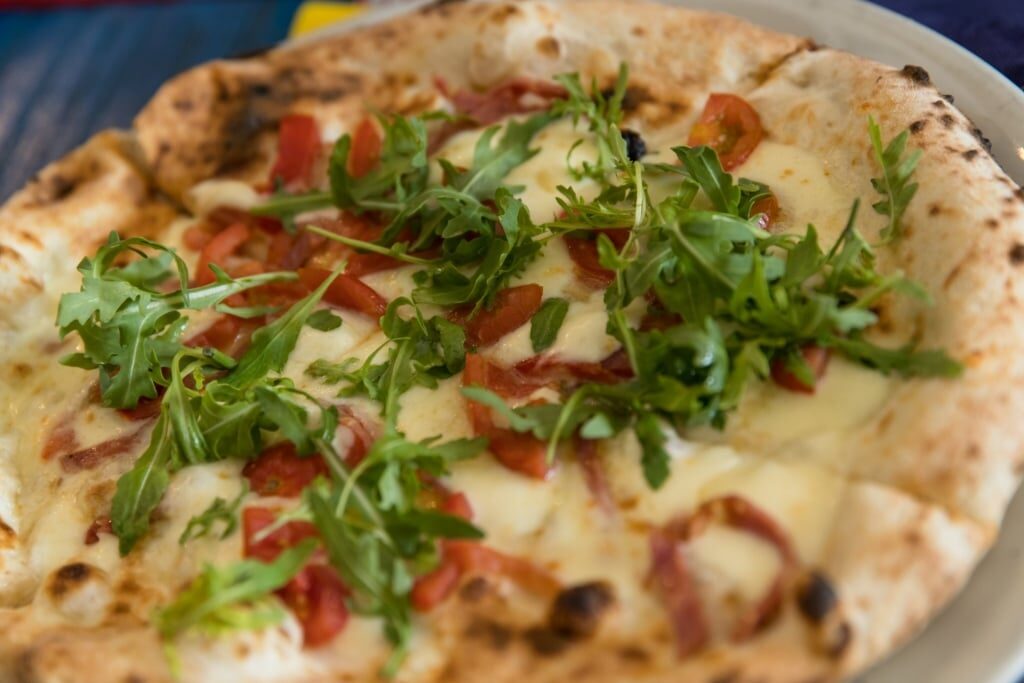
Wood-fired pizza
Alle Carrette is a traditional Roman pizzeria situated on the narrow and gorgeous Via della Madonna dei Monti. Sit out on the cobbles in summer among the regulars gathering for delicious crisp, wood-fired pizzas.
Under a ten-minute walk from the Roman Forum and the Colosseum, Alle Carrette offers a wonderful break from the more touristy atmosphere at restaurants closer to those must-see spots.
Aromaticus Monti
A health food bistro with a focus on sustainability, this is one of the north stars for vegetarians and vegans living in Monti. Wander into the basil-scented interior—potted herbs are available to buy and take home—and make your way to one of the simple pinewood tables for a delicious, casual bite.
Menu options include power bowls, fresh juices, and, for the carnivores, tartare fassona, a beef tartare. A visit to Aromaticus Monti is your healthy break from all the pasta and pizza eating. Helpfully, it’s even open during siesta time.
La Taverna dei Fori Imperiali
Also found on Via della Madonna dei Monti, the traditional La Taverna dei Fori Imperiali offers cacio e pepe and carbonara alongside a range of tasty Italian dishes influenced by the seasons.
Family-run for four generations, it’s retained an easygoing ambiance despite its longstanding renown and proximity to several of Rome’s major historical sites. Dial up the cacio e pepe with some black truffle if you’re feeling fancy. For dessert, the white chocolate soufflé with strawberries is squisito.
Travel Tips
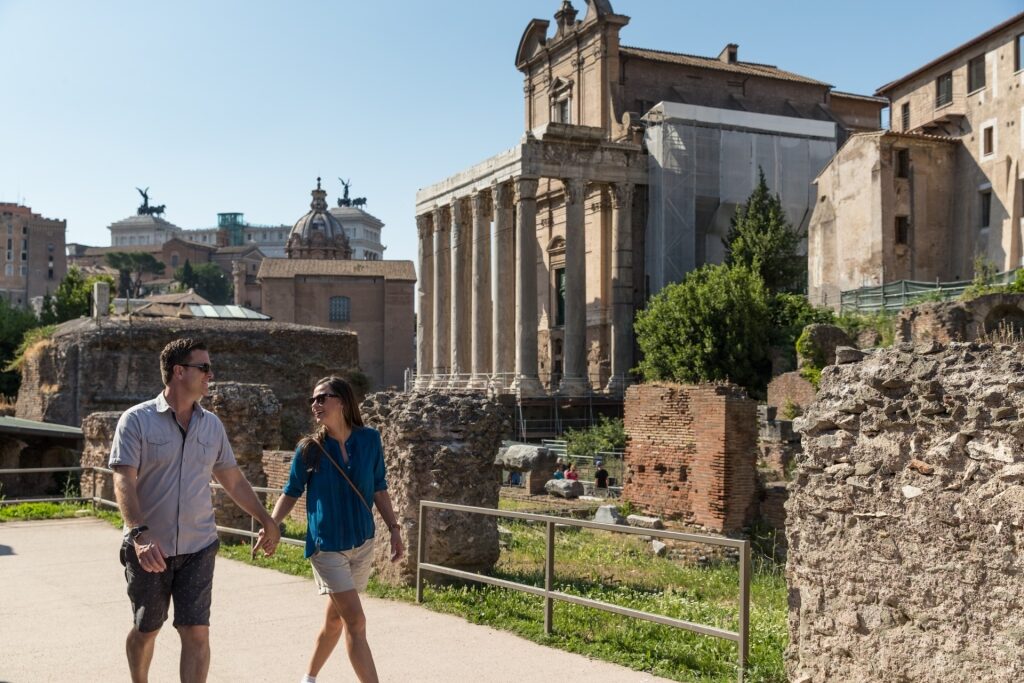
Roman Forum
Visiting Monti outside of winter, you should wear light, breathable clothing with a warmer layer on hand if you’re planning on sitting outside at Alle Carrette or enjoying an Aperol spritz near Piazza della Madonna dei Monti before dinner.
Good grips on your walking shoes or sandals are also recommended for Monti’s well-worn cobbles and triple-hill topography.
It’s useful to carry some Euros in cash while exploring Monti. While most stalls in the Mercato Monti tend to take cards, you don’t want to find yourself frantically hunting down an ATM in terror at losing the vintage leather jacket you’ve discovered.
If that does occur, there is an ATM on Via Leonina, about a four-minute walk from the market.
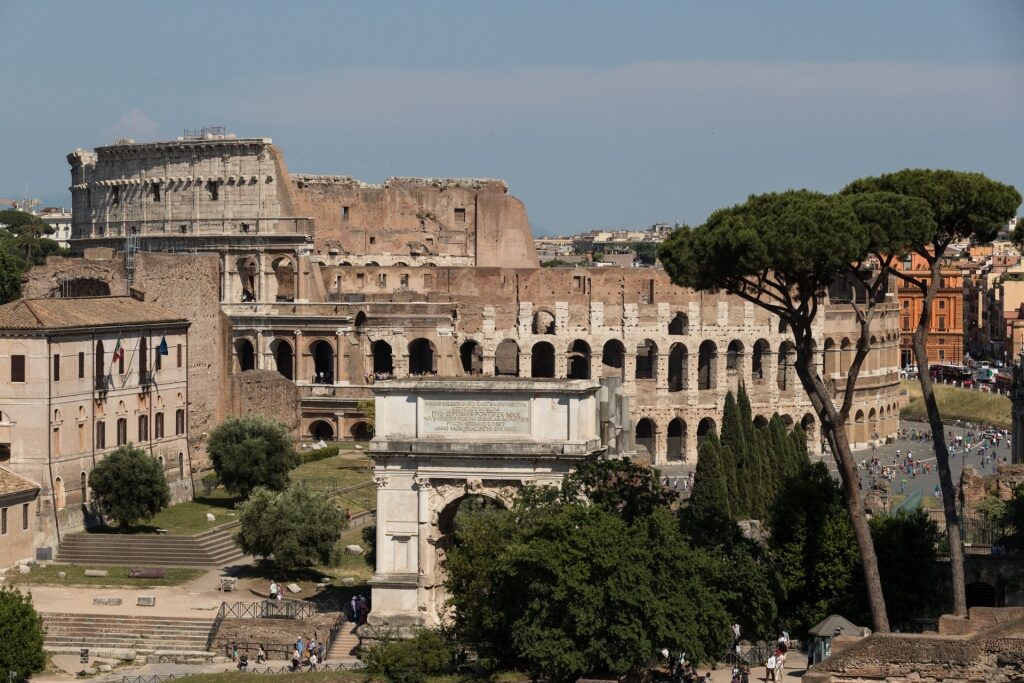
Colosseum
You don’t really have to worry about carrying cash for tips in Monti, Rome. Romans will only feel moved to tip when they’ve experienced service out of the ordinary, and in that instance typically between 10 to 15 percent.
And remember to look out for the service charge added to bills or “coperto”. This is the most similar thing to a tip you’ll find on an Italian restaurant’s bill; typically in central Rome it’s around three euros per person. It’s meant to cover the use of the cutlery and crockery during your outstanding bowl of carbonara.
Read: Best Day Trips From Rome
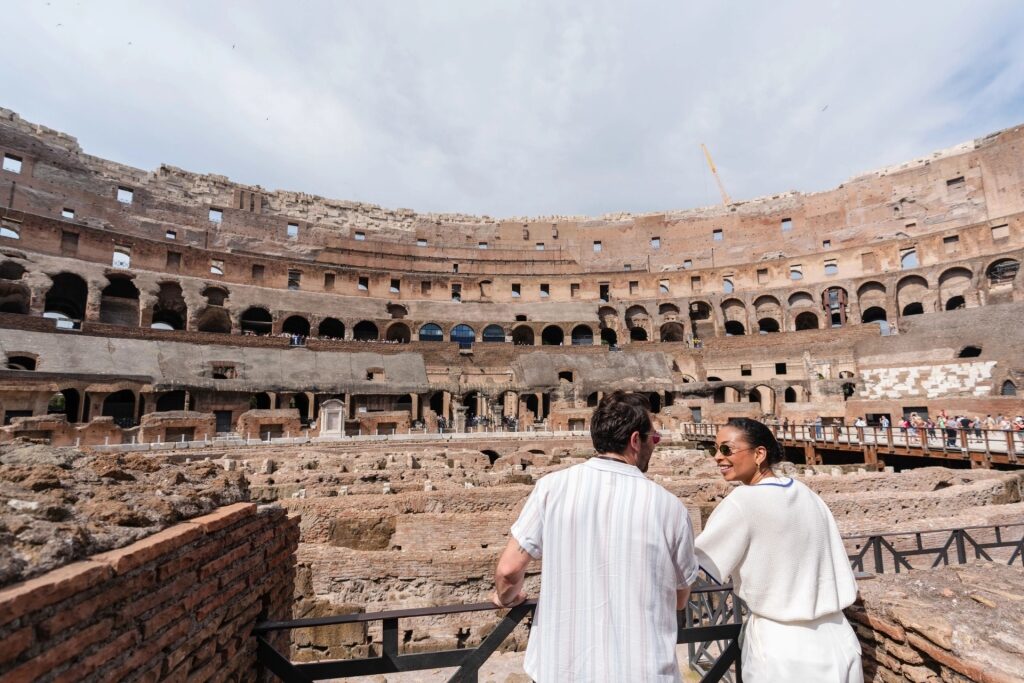
Colosseum
Are you dreaming of a sun-kissed adventure in the land of la dolce vita? Browse Celebrity’s cruises to Rome and other Italian destinations and book your next incredible getaway today.
